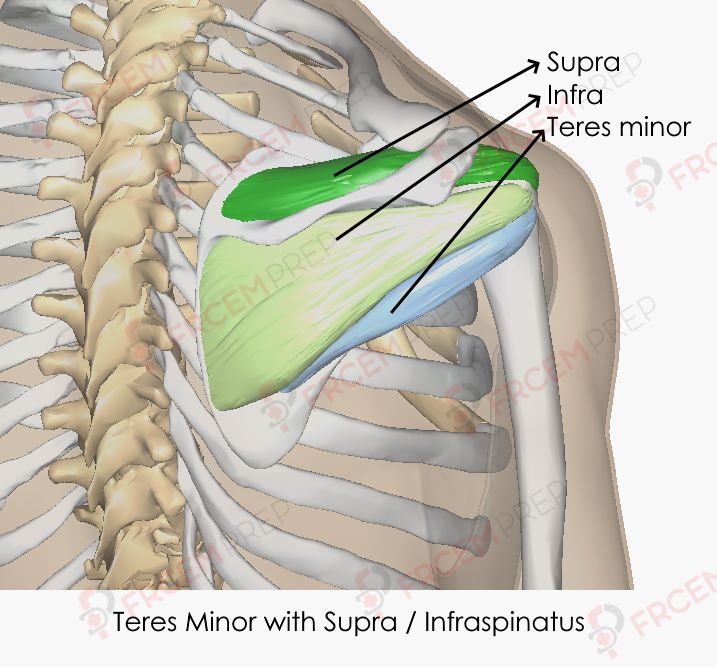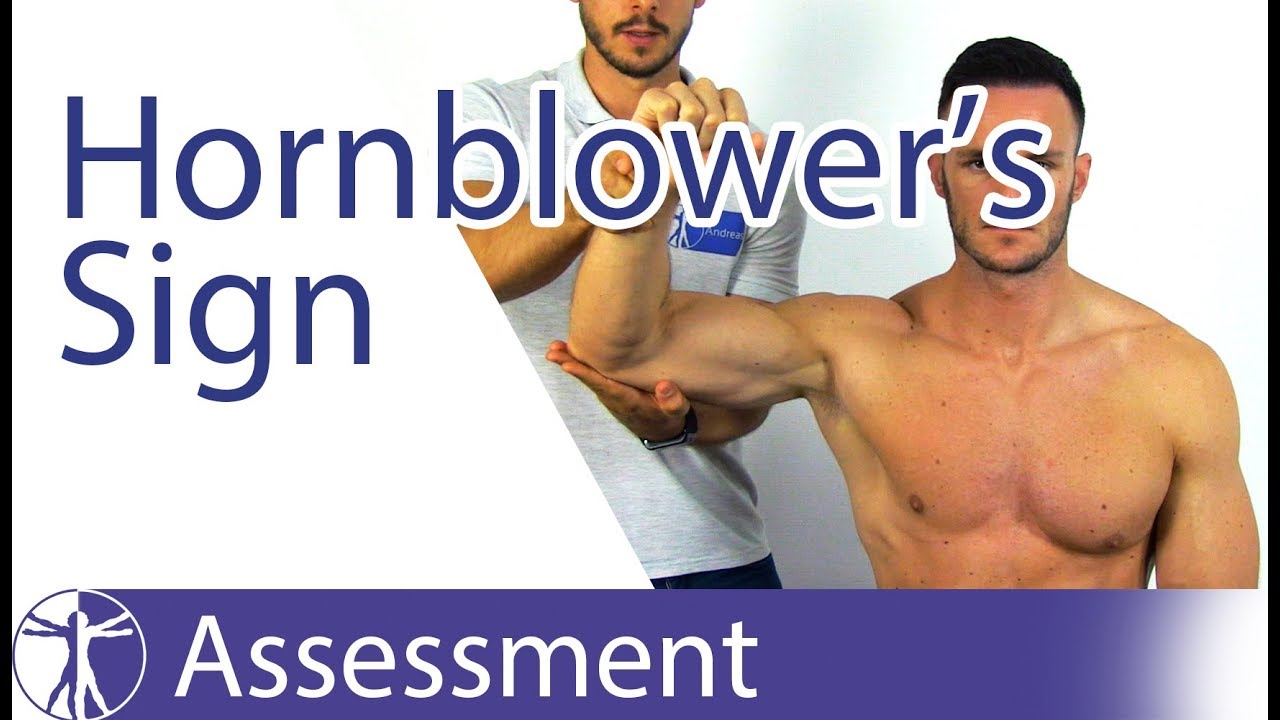Actions and innervation of: Teres minor.
Curriculum
Knowledge of origins and insertions NOT required.
Knowledge of the muscles which exert group effects (eg abduction) at the shoulder joint and the means of clinical testing: an ability to describe shoulder movements according to muscle actions and an appreciation of the role of humeral & scapular rotation.
| Origin | Lateral border of scapula (Lateral to Infraspinatus) |
| Insertion | Greater tubercle of the Humerus (Just below Infraraspinatus) |
| Nerve supply | Axillary nerve |
| Actions | Lateral rotation of the arm |
Though the curriculum says origin and insertion not required, we’ve included them as that knowledge will help you understand the movements better based on muscle orientation.

More about Teres Minor Muscle
Teres minor Origin and Insertions – Image modified from BodyParts3D, © The Database Center for Life Science licensed under CC Attribution-Share Alike 2.1 Japan
Teres means rounded in Latin. It originates adjacent to the infraspinatus muscle on the posterior aspect of Scapula. It goes behind the humeral head and inserts on to the greater tubercle of Humerus on the lateral side, just below the insertion of Supra and Infraspinatus. When the muscle contracts, it’ll pull the humeral head back and arm gets rotated laterally similar to Infraspinatus..
Teres minor is used as a reference point to mark the transition of Axillary artery into Brachial artery.
Clinical pearl.
Testing the Teres minor
Hornblower test
While the patient sits with the elbow flexed to 90 degrees and shoulder abducted at 90 degrees, the therapist applies a force to the arm anteriorly. The patient is asked to resist the force.
If the patient experiences pain or weakness, the test is considered Positive.
